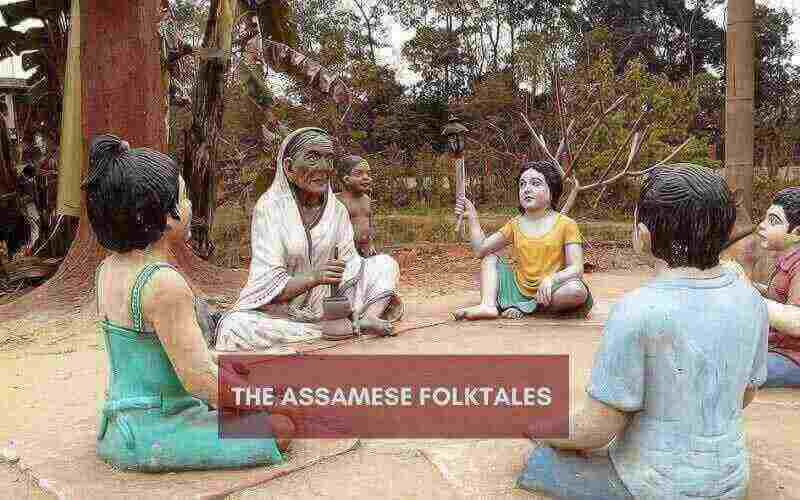
The Assamese folktales
A winter vacation evening sitting alongside Grandma and floating with the wonderful folktales on the spacious verandah, covered up with the muted moonlight... that was a memory to treasure! I remember how enthralled my brother and I used to be as we listen to her stories, the tales of the Ahom dynasty, as well as many more fascinating tales from Northeast India, around the fireplace, thinking to ourselves, "How can this be true?"
Myths from Northeast India are rich in fascinating folktales, some based on facts and proof, and others based on deep beliefs passed down from generation to generation. The incredible history and landscape of NE India and the tales behind each region are quite fascinating. Being one of the privileged ones to have heard these stories from my grandmother, I understand how valuable those small, fleeting moments are. In today's fast-paced world, when kids are forced to compete from an early age, computer and video gaming have supplanted pure storytelling moments. It is quite unusual to discover a child who can read books in his mother tongue and, more significantly, the desire to do so. It's even more unusual to hear such tales from a grandparent as more and more opt for a nuclear family.
It will be hard for me to turn back time and share a brief of all the stories of northeast India in a single article, but Burhi Aai’r Xadhu stands favourite and was a pure pleasure to the ears coming from my grandmother (aita). She used to narrate stories every day, but I am only able to recollect a few. Let's hope these stories pique your curiosity, if not start fires, for these priceless tales.
Tejimola:
This heartbreaking narrative of a girl named Tejimola, who is killed by her stepmom in a fit of anger while Tejimola's father is out at work as a traveling trader is one of the most renowned of all Burhi Aai'r Xadhu. Tejimola, on the other hand, assumed various shapes and continues to live in spirit despite her stepmother's best attempts to make her disappear forever. Tejimola does have a happy conclusion. The story is captivating from beginning to end, rich with enchantment and emotions.
Bandor aru Xiyal:
This is a well-known story about a monkey and a fox that claim to be friends but are constantly outwitting each other. Whereas the monkey deprives the fox of his rightful share of food by exploiting the fact that the monkey can climb trees but the fox cannot, the fox convinces the monkey to smash a beehive hive by telling him it is a royal drum. In this tale with a powerful moral: Don't cheat your friends, the selfish dumb monkey pays with his life.
Juwai’r Xadhu:
This narrative is about a stupid man who goes to see his in-laws. "Juwai" means "son-in-law." He gives up all of his garments to his own shadow to get free of it after mistaking it for a person. To make matters worse, he has night-blindness, which he tries to hide from his in-laws, causing a slew of problems.
Dhura Kauri aru Tiposi:
The story of Dhura Kauri, a crow, and Tiposi, a pigeon, is about how the intelligent bird escapes the clutches of the crow by making the crow fly around to acquire something, which eventually leads to the crow's death.
Lotkon:
A bright but poor guy, tired of being nagged by his wife, embarks on a quest to establish his value and manages to trick many people along the way. From devouring sweets in a sweet store by tricking the shop owner's son into thinking his name was "Makhi" (meaning housefly) to making a man run around a tree holding on to the tail of a pig, the brilliant man returns home with wealth, much to the delight of his wife.
The fascinating tales of northeast India do not end here. It is not only fascinating with startling facts but it also has lot of things to learn from. People's amazing beliefs are enhanced by mythological stories and folklore that are heard and passed down through recitation over years. Whether you say it is beliefs or have a scientific explanation, but they are our riches in the current world, and we should guard them carefully.
Disclaimer: The opinions expressed in this article are those of the author's. They do not purport to reflect the opinions or views of The Critical Script or its editor.

Newsletter!!!
Subscribe to our weekly Newsletter and stay tuned.

















Related Comments